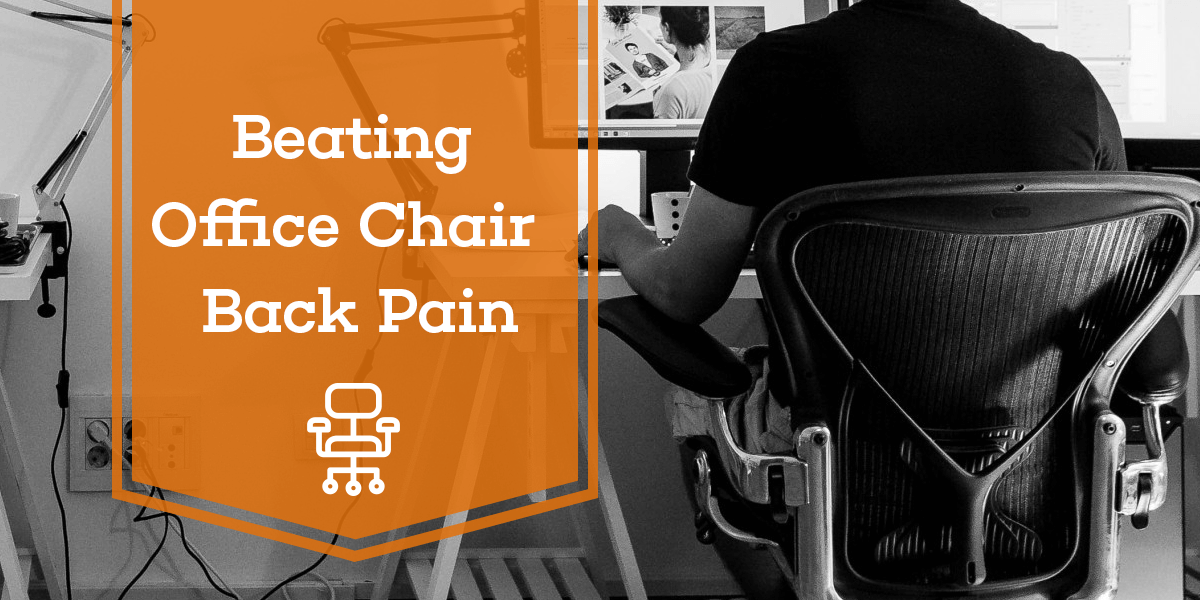Simply put: working in a traditional office environment is can lead to bad back pain.
This is not news to anyone, and as you begin to develop back problems from the sedentary hours you spend in your office chair you may start reading up on the host of different solutions out there, from standing desks to lunch-time yoga.
Well before you do anything else, make sure you read this article.
For three years I had constant back complaints. I tried all sorts of things to gain relief: physios, osteopaths, yoga, pilates and more. But I never made any ground because I wasn’t making a single change at the source of the problem. However, after implementing the knowledge in this article consistently through my working day, I was able to make persistent back pain a thing of the past in just 3 months
Below is a four-point list of the key reasons why working all day in an office chair creates so many problems, and a series of small workplace changes and regular stretching routines you can implement to start reclaiming your back health today.
Problem 1: Forward hip tilt
Cause: Sitting too much shortens the hip flexors causing the top of the hip to sit forward unnaturally.
Required Workplace Changes: Adjust the height of your chair so you feet are firmly and flat on the ground and your knee bent at a right angle. Have enough looseness between your legs and the seat of the chair so that you can easily slide your fingers under your thighs. If it is too tight for this then you need to lower the chair it or get a raised platform for your feet
Everyday Stretching Routine: A simple exercise to loosen hip flexors is a forward and sideways leg swing. Swing your leg forward and backward in a continuous fluid motion. Do this 20 times for each leg and then do the same thing sideways (across your body and out to the side). This can be done when waiting for the bus in the morning, in a cafe for your morning coffee or right at your desk by simply standing up.
You can increase the effectiveness of this exercise by elevating your planted leg on the edge of a platform so you can swing your leg fully extended. See this tutorial for a better explanation of this
Problem 2: Hunchback
Cause: Bad posture while sitting changes the shape of the spine
Required Workplace Changes: Raise computer screen so that it is at your eye level to avoid leaning over. Ensure the arms of your chair fit underneath your desk so you’re not forced to sit too far back.
Everyday Stretching Routine: Work on stretches that open your chest while standing. The simplest method is to face a wall, put your right palm flat onto the wall and then turn your body left (repeat for the other side).
Another simple exercise involves keeping a massage ball (or just a tennis ball) in your top drawer. Twice a day use both hands to apply pressure massaging the ball into each side of your chest.
Problem 3: Rounded shoulders
Cause: Typing on a keyboard all draws your hands in front of you and often this fold your whole body forward. You can identify rounded shoulders if your arms naturally hang with the back of the hands facing forward instead of out to the sides.
Workplace Changes:Determine which are of the keyboard you use most often and position the center of that section in a direct line with your belly button. Draw your keyboard close enough so that you can reach every key with your elbows tucked at your sides. This will mean keyboard tasks will require no shoulder movement.
Everyday Stretching Routine: The same exercises to correct a hunched back will also help with rounded shoulder correction.
Problem 4: Forward Head
Cause: Sitting with a constant head tilt towards your computer screen. Get someone to look at you side on while standing naturally. If your ears do not sit about your shoulders this needs correcting.
Required Workplace Changes: Having your screen at eye level will also help with correcting this issue. Also consider the readability of your screen. An arm length distance away should be enough but adjust depending on your eyesight.
Everyday Stretching Routine: At regular intervals throughout the day, steadily slide your head backwards as far as your neck will allow. Do not tilt your head back, instead focusing on keeping your gaze flat and moving only the angle of your neck. Secondly use your massage ball to apply pressure to your upper back on both sides to relieve tension.
Final Note:
The most important factor for effectiveness of these for tips is consistency, and often the hardest thing to implement is the changes in workplace posture.
Your bad habits have been developed over hundreds of hours of incorrect posture and it is not easy to change this overnight. You can use post it notes in your workspace but in my experience it isn’t long before reminder notes blend into the workspace.
The program I use to give myself posture reminders is EyeLeo, but there is plenty of similar programs out there and you just need to find the best one for your purposes. If you can find a way to get this habits to become second nature you’ve won half the battle in your struggle for back pain relief.
From there you want to start focusing on more long term goals in building better back health such as workout routines to give you a stronger core and regular routines that focus on muscle control and stamina such as back-pain oriented yoga or pilates.
And remember: serious back pain is not something to take likely. This routine was extremely effective in treating my discomfort but it should not be seen as a substitute for professional, hands on treatment. If in doubt do not take the risk and see a health professional immediately.

